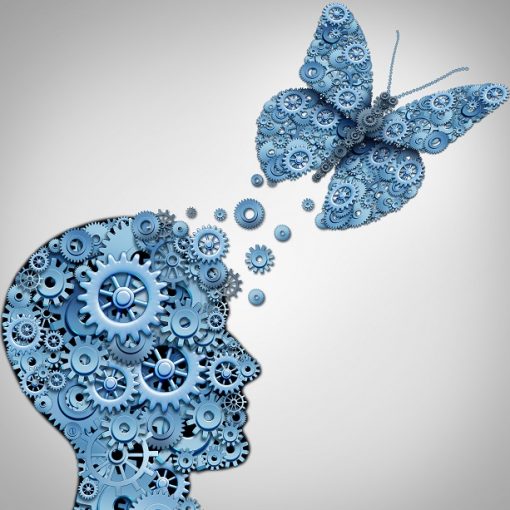
As Roger Woolger observes below, the appearance of Jung’s Red Book is not only a landmark in the history of psychology, but also in Western Culture. The book is exquisitely produced in a large format and contains beautiful calligraphy and symbolic paintings by Jung himself, the fruit of countless hours of painstaking labour. Anyone seriously interested in Jung needs to have a copy of this book. This is the first half of a comprehensive review, and a more extensive version with full references is available on the website.
“The hell fire of life consumes only the best of men; the rest stand by, warming their hands.” – Friedrich Hebbel
With the publication of the Red Book all our views of Jung are in need of re-assessment. The simplistic ‘history of psychoanalysis’ view of Jung as the successor who broke from Freud with a broadened view of the unconscious mind and who eschewed the infantile sexuality focus for a religious view of the psyche’s healing already had to be abandoned when Memories, Dreams, Reflections (hereinafter referred to as Memories) burst on the world in 1961. This provocative glimpse half a century ago into so many aspects of Jung’s inner life had already raised questions about the closet mystic, the secret Gnostic, the painter who had renounced his vocation, the reluctant prophet, the question of his past lives and more. His personality had already begun to seem more complex, even multiple given the personas of doctor, scientist, philosopher, sage, preacher, visionary, painter, and often shaman that he presented to the world in varying degrees.
When, after his great ‘encounter with the unconscious’ – for which we could equally read ‘encounter with the gods’ – Jung came into his own, he no longer belonged to psychology, psychiatry or medicine; but from this time on to paraphrase Ben Jonson on Shakespeare: ‘he wrote not for an age-or a discipline – but for all time.’ Now that we have the Red Book, this far more complete account of his inner journey than the tantalising hints and fragments first made public in Memories (which in some editions also included his elusive piece of pseudo-Gnosticism called the ‘Seven Sermons of the Dead’), we can begin to appreciate the enormity of his ambition as well as his achievement.
Sonu Shamdasani follows the reputable scholarly tradition established by Henry Ellenberger in his encyclopedic work The Discovery of the Unconscious (1970). Nevertheless, valuable as this hermeneutic undoubtedly is, I feel strongly that Shamdasani is missing the bigger picture. The Red Book is far more than a very important, hitherto buried milestone in western psychology; it must also rank as one of the most outstanding landmarks in the spiritual history of modern times.
Shamdasani is noticeably uncomfortable with Jung’s mediumistic practices and frequent interactions with ‘the spirit world,’ calling them dryly ‘parapsychological events’ that surrounded Jung as he grew up. He notes that these events were also prominent in his encounters with Freud – poltergeists, cracking tables, shattering knives etc. but does not really explore the deeper question of this manifest ability of Jung’s to constellate powerful spirit phenomena, obvious psychic talents he was born with – talents that any anthropologist would see as marks of a shaman.
Jung’s Family: Ministers and Spiritualists What of the actual religious milieu out of which Jung’s visionary response to a moribund Christian civilisation arose? It is well known that his father was a minister of the Zwinglian Swiss Reformed church, descended from a long line of churchmen, and that Jung grew up in a country parsonage. What is less well known is that on his mother’s side he came from another family of ministers, but who were also spiritualists. Several of his cousins and aunts were sensitive to spirits and aware of their secondary or ‘Number 2’ personalities, popularly known in those days as ‘spirit guides’ or ‘controls’. Grandfather Samuel Preiswerk was known to set a place at the dinner table for the spirit of his deceased first wife. As a girl, Jung’s mother, Emilia Preiswerk had to stand behind father Samuel’s chair as he composed his Sunday sermons so that she could ward off nosy spirits who would distract him from his good Christian thoughts. And it was Jung’s mother, herself mediumistic, who encouraged the adolescent student Jung to conduct séances with Jung’s much younger cousin Helly, recognised from an early age as the most talented medium in the family of that generation.
Jung too had striking psychic experiences when he was quite young. As he recounts famously in the early chapters of his Memories, when he was still a child he had a number of very strange visions. Most remarkable was that of an awe- inspiring giant enthroned phallus. Another, a few years later was to him truly blasphemous: he envisioned the Almighty God defecating on Basel cathedral (!) Naturally he could hardly talk of such things to his conservative and spiritually depressed father and he was for a long time fearful of his mother’s psychic double personality. It was only as a curious but hyper-intellectual adolescent studying masses of books on psychical research that he could start to look at such phenomena – but initially strictly as a ‘scientific’ observer. This is when he began the early experimental summer séances set up by his mother with cousin Helly and his other psychically gifted cousins. These communications with the spirit world are largely glossed over in Shamdasani’s Introduction as if they were a kind of embarrassment, or as if ‘parapsychology’ has long ago explained away all these strange phenomena. It still hasn’t. In fact parapsychology, long banished by the American Psychological Association, has barely existed as an academic discipline for the last 50 years. (The Rhine Institute long ceased to be part of the University of North Carolina, for example)
Jung’s himself was ambivalent about spirit phenomena. This is mirrored by a curious omission, rarely remarked upon, that occurs in the chapter called ‘The Tower’ in Memories. This chapter, entirely devoted to a discussion of his ancestors and one which I have always found indispensible for understanding of Jung’s relationship to the spirits of the dead, only mentions his ancestors on his father’s side. His mother’s side, the Preiswerk family, who as we have seen, were all spiritualists of one kind or another, is completely ignored in this crucial discussion! (It is however possible this omission was a cut made at the behest of the Jung family estate; I have no way of knowing)
Jung eventually let through his own mediumistic side in the personal experiments he made leading up to the writing of the Red Book and when he did so it was close to overwhelming. Previously Jung’s psychic gifts had terrified Freud. When Freud’s scorn for what he called ‘the black tide of mud of occultism’ got to Jung he manifested a poltergeist. He felt his belly get red-hot and a detonation occurred in a bookcase in the room; realising he could somehow control it, Jung made it happen a second time. These are signs of the power of a nascent shaman.
When Jung finally went on his initiatory ‘vision quest,’ to use shamanic language, his second sight expanded into a prodigious talent as a seer and visionary. Like Swedenborg, not only could he see the spirits of the dead, but like Blake he also found himself talking to Old Testament prophets; Elijah is the first to appear, accompanied by the mysteriously blind figure of Salomé, daughter of Herod. Not long after that comes the Devil. Finally at a momentous climactic point he envisions himself physically crucified and is encircled and squeezed by a giant serpent till his blood runs. Then Salomé reveals to him that he is Christ. A while later, crossing a desert, he meets an old anchorite, but then he must also visit an insane asylum where he is pronounced mad, only to find his fellow inmate is Friedrich Nietzsche.
Jung’s visionary encounters are by no means confined to Biblical Judeo-Christian spiritual figures. He also meets the gigantic figure of Izdubel (aka Gilgamesh) and later a scattering of Nordic heroes, serpents of various ilk, and divinities and demonic forces from sundry pagan cultures. A powerful source of inspiration and guidance comes from the Vedic cults of India which he quotes and these are interspersed with images and voices from Egypt, the Hellenic Mystery schools and Alexandrian Gnosticism. The latter current of influences culminates in the figure of Philemon, who becomes his chief authority or guide as the narrative proceeds. Towards the end of the Red Book we find the Seven Sermons of the Dead which in Memories had at first been attributed to the Gnostic persona of Basilides but here are clearly the teachings of Philemon.
At the core of the Red Book are Jung’s rapturous hymns to the spiritual figure of Phanes. They are comparable to the lyrical mysticism of the Song of Songs or the ecstatic Sufi poetry of Rumi. His incantations for the healing of Izdubel recall the Psalms of David and the chants of the Rig Veda. Certainly Jung knew and absorbed all these styles from his vast reading, but what came out of him – or through him – are no clever literary pastiches or scholarly imitations. They clearly issue from a direct and passionate spiritual encounter with that ‘wholly Other’ that Rudolph Otto called the numinous to characterise the presence of the Divine – ‘in the presence of whom all Nature quaketh and all clerkes be fools’ (The Cloud of Unknowing). I think we can no longer equivocate about Jung’s theurgic powers when we read these invocations and when we contemplate his richly and lovingly wrought manuscripts and paintings.
Was Jung a Mystic?
By and large, the terms mystic, visionary, prophet, gnostic or shaman are used very sparingly by Shamdasani in his Introduction and his other writings. Nevertheless, some recent writers are more prepared to fully embrace terms like mystic etc. We have Lance Owen’s very perceptive review of the Red Book from an avowedly gnostic perspective, which considers ‘the Hermeneutics of Vision,’ as well as Gary Lachman’s recent book Jung the Mystic, and a very sympathetic blog from American dream psychologist and anthropologist Robert Moss, who looks at Jung as a shaman.1 From my own perspective as a student of both religion and the Jungian corpus I find the dazzling visionary world of the Red Book demands this broader view. To be sure, Jung was a supreme psychologist and a radical thinker in psychiatry, but the Red Book also reveals him as a closet mystic and visionary comparable in certain ways to Blake, Swedenborg and Dante. He was scientist and mystic; both. This hugely expanded picture that the Red Book gives us of Jung’s intense inner life demands that we expand the debate as to who Jung was and where he stands in our religious and spiritual culture as a whole. We can no longer confine him to that ill-defined field called ‘psychology.’
Indeed, now that we have the record of his struggles to integrate the polarities of scientist-philosopher versus mystic within his soul we can also see how they urged upon him another mantle that he was very reluctant to wear – because so many have been ridiculed and persecuted for wearing it – that of shaman-prophet. It is surely no coincidence that on the very first page of Liber Novus, Jung quotes from Old Testament prophet Isaiah (53): ‘He was despised and rejected of men: a man of sorrows and acquainted with grief …’).
The Hidden Shaman
The evidence of the Red Book and of those who knew him intimately is that Jung was very much a shaman. But he carefully disguised himself behind the well developed persona of wise old psychiatrist – the ‘Herr Doctor Professor’ effect as Gary Lachman tellingly calls this persona. Shamanic parallels in Jung’s life and especially the Red Book and Memories are numerous and striking if we look at Jung’s larger role on the cultural stage and reflect on what Marie- Louise von Franz calls ‘his myth in our time.’ Perhaps Shamdasani shies away from calling Jung a ‘shaman’ because ‘shamanism’ is not politically correct in academic or conservative professional circles in Britain.
The fact is that shamans are always outsiders – however much they may try to be insiders, as Jung certainly did. This is precisely because they see beneath the surface of the very ‘spirit of the times’ to which the established professional class has already largely sold out, as Jung himself did during his years around Freud. The shaman has no choice but to be in touch with those counter-currents that Jung called ‘the spirit of the depths’ and go against the current of the spirit of the times. This is why Jung was forced to go his own way. For to become who he was born to be – or as he preferred to put it, to individuate – meant not to just reclaim his ancestral mediumistic talents, inherited from his mother’s side of the family, strikingly revealed in his childhood visions, or the alchemical wisdom implicit in his father’s lineage, but also to accept his shamanic role as a ‘wounded healer of the soul’ (cf. Claire Dunne’s biography of this name.) Part of regaining his lost soul meant reclaiming a painful destiny: it meant accepting the mantle of what Robert Moss, calls ‘shaman of the west,’ and not shying away from the pervading spiritual sickness that he saw gnawing at the roots of our culture.
Had Jung been born into a tribal society like the Lakota Sioux, to which the famous Black Elk belonged, his childhood visions (the underground phallus, for example) would have been recognised as exceptional by some wise elder or medicine man and he would been sequestered and trained as a seer by an experienced practitioner. Black Elk’s childhood visions became the cornerstone of his tribe’s understanding of their coming fate at the hands of the white man and today those visions still stand as sacred utterances for the Lakota people.2 Some years ago Californian psychologist Julian Silverman wrote an important paper entitled ‘Shamanism and Acute Schizophrenia’ suggesting that many a ‘patient’ labeled and heavily medicated as ‘schizophrenic’ in our secular society might well have been recognised for his or her visions as a potential shaman in other more spiritually attuned societies.
From anthropological studies of shamanism far too numerous to list,3 I would enumerate some of the most prominent characteristics of the shaman as they relate to Jung. (See also von Franz’s biography C.G. Jung: His Myth in Our Time for further and more detailed comparisons):
- Shamans are often picked out in early childhood because of their strange dreams, psychic sensitivity and communication with spirits. An older shaman in the tribe will take the child who ‘sees,’ away from the tribe and begin to initiate and train him or her in the healing use of such visions. (e.g. Black Elk, Helly Preiswerk; cf. too Woolger & Woolger: on the Persephone or mediumistic archetype in The Goddess Within (1989))
- Shamans of often have lifelong struggles with breakdowns and severe illness, earning them the common tag of ‘wounded healer’ (Cf. the title of Claire Dunne’s biography: Jung, Wounded Healer of the Soul (2000)).
- Shamans stand apart from their tribes, often seeming eccentric, living separated from the group, keeping strange hours and having unconventional relationships with the opposite sex (Jung’s relationships with women arouse much comment and speculation to this day.)
- Shamans are ‘seers,’ they know and pick up things others are not aware of (Jung admitted that he ‘saw through people’)
- Shamans are in touch with the greater currents of the tribe’s destiny, often having prophetic ‘big dreams’ of approaching disaster and collective upheaval. (This was the case with Lakota shaman Black Elk who foresaw the coming destruction of the Native Peoples by the white man)
- Shamans are natural healers; just to be in their charismatic presence can shake up transform a person’s psyche, sometimes without verbal exchange (Jung recognised his own charisma. He once said: ‘By my very presence I crystallise; I am a ferment.’ (Dunne, p.2.) He was enormously attractive to women spiritually as well as erotically).
- Shamans have secrets they cannot tell; they often suffer the burdens of their knowledge and of ‘seeing’ too much. They ‘know’ more than ordinary people, hence they are often described (or reviled) as ‘gnostics.’ Often this is painful and they feel deeply misunderstood (Jung privately complained of this; but he was also deeply committed to secrecy.)
- Shamans are often tricksters, challenging and reversing social conventions in order to loosen rigid behaviours and open the connections between the worlds to bring about a ‘healing crisis.’ in those they treat. (Anton Mesmer, another shaman in disguise, coined this term).
- Shamans are the preeminent mediators with the ancestors of their community; they regularly communicate with the dead. (This is the stated intent of the Red Book.) And they have the task of keeping the living and dead in balance (Cf. Malidoma Somé’s Of Water and the Spirit for a compelling account of this.)
- Shamans ‘walk between the worlds’, which is to say, they are experts in ‘journeying’ to higher and lower spirit worlds where they converse with the spirits and the gods, they are intermediaries between the seen and the unseen worlds (In Jung’s later language: ‘the relationship between the conscious and the unconscious’)
- Shamans rescue lost souls and often have to placate or bargain with dark or demonic forces. (Even in his early psychiatric writings, Jung often described psychosis as ‘soul-loss’ and saw psychotic patients as suffering from invasions by ‘the unconscious,’ a useful neutral term for the ‘spirit world,’ which science was becoming more and more suspicious of in Jung’s time due to all the charlatanism that popular spiritualism frequently degenerated into)
- Shamans know how to work with tutelary and other helping spirits, often animal in form (Jung worked with his ‘soul,’ with Elijah and later Philemon, among others, not to say the several serpents who followed him around in the Red Book. Serpents are common in the ancient Mystery Schools and of course in the cult of the healing god Asclepius.)
Jung’s intimates, Emma, his wife, Toni Wolff (his close friend and early collaborator) and later von Franz and Barbara Hannah, always recognised Jung’s unusual shamanic nature and the torments that went with it, and while it was stormy and unpredictable, leading him to transgress many social conventions, they respected and tolerated it, recognising the enormous gifts he was bringing to the larger world.
Doubtless it is Jung’s shamanic nature that has contributed to the rumours, that many have felt as distinctly embarrassing, about the ‘wild man’ side of Jung, reports of which have slowly leaked out over the years. But during his life this ‘wild’ shamanic side was by tacit agreement long kept secret by his close collaborators and friends, who kept a respectful eye towards protecting Jung’s descendants, from all descriptions a fairly conventional Swiss family.
Roger J. Woolger is a Diplomate of the C.G. Jung Institute in Zurich and holds degrees in psychology, philosophy and religion from Oxford and London Universities. His doctoral thesis was on The Mysticism of Simone Weil. He has taught Jung at Vassar College, New York and Concordia University, Montreal as Distinguished Visiting Professor. He is also known for his workon past life regression. See further: www.deepmemoryprocess.com





